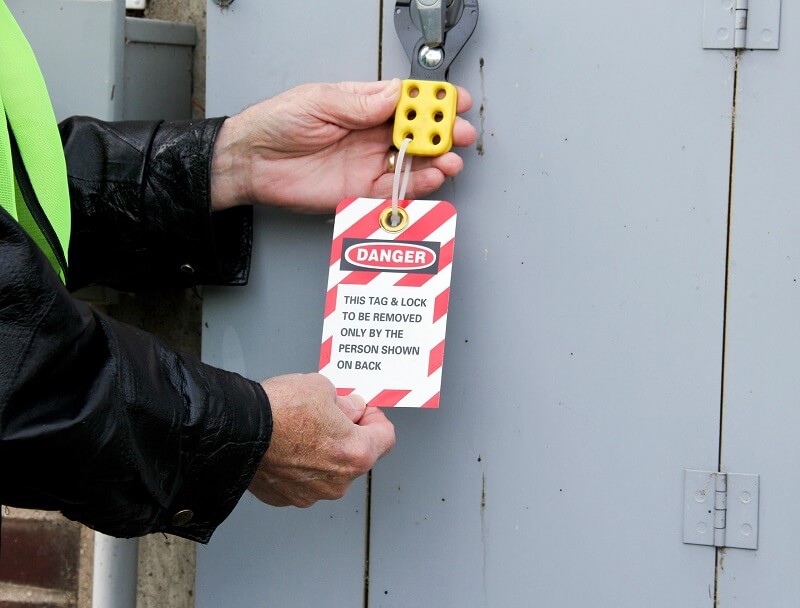Lockout Tagout
Just like any other workplace, we regularly perform maintenance repair and service work on the equipment. It may seem like routine maintenance, but if not done correctly, service where it can be dangerous to both the employees performing the work and also the people who are working nearby.
Equipment that has simply been shut down for service work can inadvertently be restarted by a co-worker or equipment controlled by automatic processors, timers or computer can restart without warning. Serious injury and equipment damage can be caused by the failure to control hazardous energy during maintenance, repair and service work, that’s why we use a safety procedure called lockout tagout. Now you are not expected to fix equipment yourself. But you’re an important part of the process that keep people like me safe and the equipment protected while I’m up to my elbows trying to fix it.
What is lockout tagout? Who are authorized in affected employees? What are lockout devices and what to do when you see them and how the lockout tagout procedure affect your work? Lockout tagout is the name for a safety procedure that does two things. Lockout tagout protects against the accidental restarting of equipment and it controls the unintentional release of hazardous energy while maintenance is being performed. Because of the hazards associated with maintenance, servicing or repair of the equipment we use in the workplace, your organization has developed a lockout tagout program. This program defines the specific procedures to follow up, to protect us and the equipment while we’re working on it.

Lockout tagout involves two different categories of personnel- authorized employees and affected employees. An authorized employee is anyone who is authorized to shutdown, lockout and tagout equipment in order to perform service or maintenance. An affected employee is anyone who either operates or who works near the equipment being services or maintained but does not actually do the service work. An important part of lockout tagout involves letting affected employees know what’s going on. So when equipment is about to be shut down for service maintenance or repair, you can expect a visit with an authorized employee to let you know what equipment will be shut down and how long it will be shutdown. Safety means working as a team and understanding everyone’s role in the lockout tagout process.
There are various types of lockout devices we might encounter. Locks and tags are examples of lockout devices, placing a lock on a disconnect switch or value physically prevents anyone form restarting or re-energizing the equipment during servicing or maintenance. Each employee involved in the maintenance procedure is provide with their own lock and matching key, here’s a rule they hold hard and fast. They never share or exchange lots and keys. One lock, one key, that’s how stay safe on the job. A lock and one of these fancy devices don’t tell the whole story. To help communicate what’s going on,it is necessary to use tags and lockout tagout procedures. The tag tell who placed the lock and serves as a visible reminder that the equipment is shut down. Everybody on the floor needs to be familiar with the tags in your operations and what they mean. So form now on, when you see lockout devices and tags on equipment, the general rule is stay clear of the area unless you’re the authorized personnel servicing the equipment. Don’t try to start the equipment even if it looks like the work is complete and no one’s around. If the lockout tagout process in interfering with your ability to do your job, you need to talk with your supervisor or manager, whatever you do, don’t get creative and try to find a workaround to get the equipment running, if it’s shut off, locked and tagged. It’s not done to make your job more difficult, it;=’s done to protect the safety of personnel performing maintenance and the safety of the equipment itself. Once the maintenance work has been completed, the employees who are authorized the lockout tagout will let you know when the equipment will be ready for use. Until that time, keep clear of the equipment.
Lockout tagout is meant to protect us folks who are work on the equipment, the safety of the equipment and in many cases your own safety as well. You need to know who’s authorized to perform lockout tagout and those people like yourself who are affected by the process know what the locks and tags in your facility mean, and don’t mess with them or the equipment they’re attached to. If you have any questions, be sure to ask the supervisor.
In our facilities, we all have to work together to keep everyone safe. And lockout tagout is an important part of how we do it. That’s something we can all live with.










